#Frombork Poland
Explore tagged Tumblr posts
Text

16th-Century Compass Possibly Belonging to Nicolaus Copernicus Unearthed in Poland
Researchers have discovered a 16th-century compass that is thought to have been used by astronomer Nicolaus Copernicus in the canonical gardens of Frombork, northern Poland, during a recent archaeological dig.
Copernicus is famously known for his heliocentric theory, which posited that the Sun is the center of the solar system and the planets orbit around it, as presented in his work De Revolutionibus Orbium Coelestium. Copernicus, who served as a canon at the Frombork cathedral, lived in the town for nearly 30 years, conducting his clerical duties and astronomical observations.
Nicolaus Copernicus famously wrote himself into history by looking up at the sky and speculating that the Sun, not the Earth, was at the center of the universe. Now, researchers from Warminska Grupa Eksploracyjna, an amateur archaeological exploration group in Poland, have made a discovery about Copernicus himself by looking at the ground.
The compass, which was made of a copper alloy, was discovered buried under the gardens of the northern Polish cathedral known as the Archcathedral Basilica of the Assumption of the Blessed Virgin Mary and Saint Andrew, or Frombork Cathedral.
The compass is the third of its kind to be found in Poland, and the second to be found in Frombork’s gardens. According to an employee from the Nicolaus Copernicus Museum in Frombork, Zorjana Polenik, the compass “could have belonged to Nicolaus Copernicus himself.”

Nicolaus Copernicus (19 February 1473 – 24 May 1543) was a Renaissance polymath, active as a mathematician, astronomer, and Catholic canon, who formulated a model of the universe that placed the Sun rather than Earth at its center. In all likelihood, Copernicus developed his model independently of Aristarchus of Samos, an ancient Greek astronomer who had formulated such a model some eighteen centuries earlier.
#Nicolaus Copernicus#16th-Century Compass Possibly Belonging to Nicolaus Copernicus Unearthed in Poland#Frombork Poland#canonical gardens#ancient artifacts#archeology#archeolgst#history#history news#ancient history#ancient culture#ancient civilizations#middle ages#renaissance
22 notes
·
View notes
Text




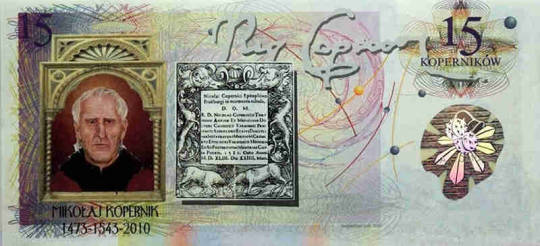
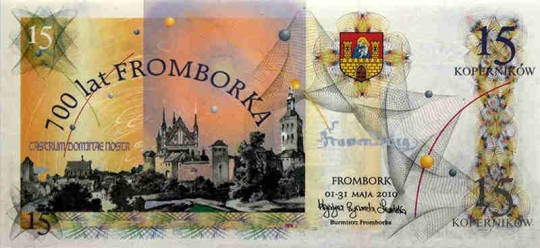
POLAND - locally issued notes with Mikołaj Kopernik, anniversary, commemorative: WARMIA - 550th birthday & 700 years of the city Frombork.
#Kopernik#Copernicus#Poland#Polska#Frombork#anniversary#banknot#fancy#pamiatkowy#lokalny#local#fantazyjny#for collectors#kolekcjonerski#banknote#Warmia#rocznica#550#fantasy#note#700
6 notes
·
View notes
Text

FRAUENBURG (Ostpreussen) - now FROMBORK in Poland
0 notes
Photo


#postcard#poland#frombork#retro photography#black and white#retro#P.T.T.K#my postcard post#2023 postcard post
1 note
·
View note
Text
Cathedral Hill at Frombork, Poland










#gothic#gothic architecture#gothic church#gothic castle#gothic cathedral#brick gothic#hanseatic league#frombork#warmia#prussia#poland#polska#architecture
23 notes
·
View notes
Text


Flag Wars Bonus Round
9 notes
·
View notes
Text
"Those things which I am saying now may be obscure, yet they will be made clearer in their proper place."
Nicolaus Copernicus was a Renaissance polymath.
Born: 19 February 1473, Toruń, Poland
Died: 24 May 1543, Frombork, Poland

#16th century#1500s#renaissance art#mathmatics#copernicus#Renaissance polymath#Nicolaus Copernicus#poland#today on tumblr#quoteoftheday#quotes#quotations#wise#wisequotes#polymath.
3 notes
·
View notes
Text
Top 5 unique facts about Poland that nobody knows
Poland is a fascinating nation that unites Eastern and Western Europe and offers a wealth of cultural diversity, historical sites and scenic landscapes. Poland is a unique tourist destination due to its diverse terrain and moderate temperature. Poland stretches from the Baltic Sea in the north to the Sudetes and Carpathian Mountains in the south. Poland's main cities, Warsaw, Krakow, Wroclaw, Lodz, Poznan, and Gdansk as well as smaller important cities, highlight the country's vibrant urban life and attractive historical architecture. Getting a Poland visa is the first step for anyone thinking about visiting this fascinating country.
Situated in the center of the plains of Northern Europe Poland boasts a rich historical legacy spanning more than a thousand years. The tenacious Polish people have managed to hold onto their cultural identity in spite of many obstacles faced throughout their history. Poland is currently the biggest of the former Eastern European states and one of the EU's most populous members. Poland is a crucial participant on the European scene because of its enduring spirit and strategic importance. Here, we share five interesting facts about Poland that are sometimes missed, giving readers a better understanding of this amazing nation.
Here are the Top 5 unique facts about Poland that nobody knows:
1. Polish Individuals Think Forward:
A lengthy line of intellectual and scientific accomplishments in Poland may be traced back to individuals like Nicolaus Copernicus. Copernicus who is renowned for establishing the heliocentric model of the solar system and demonstrating that the Earth revolves around the Sun dramatically altered our conception of the cosmos. Cities like Torun and Frombork where he carried out a great deal of his work and had a lasting impression on the scientific world, are good places to investigate his legacy.
The memory of Maria Curie Skłodowska the only individual to win two Nobel Prizes in distinct scientific disciplines physics and chemistry also serves as an inspiration for Polish youth. In addition to advancing science her important research on radioactivity cleared the path for women in academia. To her credit Curie-Skłodowska was also one of the first women in history to receive a driver's license, a testament to the progressive nature of Poland's progressive people.
2. Name Days Are Celebrated by Poles Often:
Name days or imieniny are frequently commemorated in Poland with just as much fervour as birthdays. Every Polish name has a corresponding day of the year usually associated with a Catholic saint's feast day. This custom which has its roots in Polish culture, offers more reasons to celebrate and get together with others.
Traditionally, friends and family join together to celebrate name day by sharing a meal, exchanging little gifts, and spending time together. Polish society places a high value on familial and communal ties, and this tradition adds a distinctive cultural element that distinguishes Poland from many other nations. Obtaining a Poland visa will enable you to participate in these distinctive festivities if you intend to travel to Poland.
3. The World's Biggest Castle Is in Poland:
The largest castle in the world by land area is the Castle of the Teutonic Order in Malbork. Constructed as a Teutonic fortress in the thirteenth century this magnificent building is currently recognized as a UNESCO World Heritage Site. It is a must-visit location for history buffs and architecture fans alike because of its expansive grounds, exquisite architecture, and historical significance.
One of Poland's fifteen UNESCO World Heritage Sites Malbork Castle reflects the nation's rich cultural legacy and historical significance. The UNESCO sites in Poland, which range from the ancient Białowieża Forest to the medieval Old Town of Krakow, provide tourists with a wide range of experiences. You experience Poland's rich history and see these amazing sites, be sure you obtain your Poland visa.
4. Poland Is Identified Following an Old Slavic Tribe:
The Western Slavic tribe known as Polanie is whence the term "Poland" originates, meaning "people living in open fields." The Polish nation was founded when this tribe arrived in the area in the sixth century. Understanding Poland's beginnings and the formation of its national identity requires an understanding of the history and culture of the Polanie tribe. Poland has remained connected to its historical heritage over the ages, even as it has developed into a contemporary European country. The nation's celebrations, rituals, and everyday existence all reflect this blending of tradition and modernity. You can see directly how the Polanie tribe's past continues to shape modern Polish culture by traveling to Poland.
5. One of Europe's Most Religious Nations is Poland:
Polish society places a high value on religion with Catholicism being the most common religion. Poland has a large number of Catholic radio and TV stations which reflects the pervasiveness of religion in daily life. Poland lacks a rigid separation of religion and state in contrast to many other European nations which highlights the significance of faith in the country's social and cultural fabric.
Rising higher than even Rio de Janeiro's Christ the Redeemer the imposing monument of Jesus Christ in Świebodzin is one of the most outstanding representations of Poland's religious devotion. This enormous statue honours Poland's rich religious history and the people's unwavering faith. You can investigate these holy sites and learn more about Poland's spiritual landscape by traveling there with a Poland visa.
Conclusion:
Poland is an interesting tourist destination because of its distinctive blend of rich history, cultural traditions and forward-thinking energy. Poland provides a multitude of experiences that represent its unique background, from the beloved custom of name day festivities to the ground-breaking scientific accomplishments of individuals such as Nicolaus Copernicus and Maria Curie-Skłodowska. The nation's striking monuments, such the tallest Jesus Christ statue in Świebodzin and the largest castle in the world in Malbork, emphasize its historical and religious significance even more. By examining these aspects of Poland, one might have a better understanding of the country's resilient populace and enduring cultural identity.
There is much to discover in Poland, whether you are drawn to its historical landmarks, lively cultural traditions, or breath taking natural surroundings. Getting a Poland visa lets you into a country full with incredible tales and noteworthy accomplishments. Every trip to Poland is guaranteed to unveil fresh and distinctive facets of this diverse nation making for an amazing vacation experience. Make travel plans now and explore the fascinating and hospitable country of Poland.
0 notes
Photo

Jesienny wieczór we Fromborku Autumn evening in Frombork- Poland #frombork #fromborkcathedral #fromborkcity #frombork🇵🇱 #poland #poland🇵🇱 #polska #cathedral #night #nightphotography #wieczor #wieczór #autumn #aerialperspectivv #nightphotography #autumnphotography #katedra #katedrafrombork #kopernik #mikolajkopernik #mikolajkopernik #shotoniphone #iphone11 #iphonephotograpy (w: Frombork - gród Kopernika) https://www.instagram.com/p/B4p_uT5ngBQ/?igshid=1s3swakaiv4xv
#frombork#fromborkcathedral#fromborkcity#frombork🇵🇱#poland#poland🇵🇱#polska#cathedral#night#nightphotography#wieczor#wieczór#autumn#aerialperspectivv#autumnphotography#katedra#katedrafrombork#kopernik#mikolajkopernik#shotoniphone#iphone11#iphonephotograpy
7 notes
·
View notes
Photo


ACTUALLY COPERNICUS WAS WRONG AND EARTH IS FLAT. YOU CAN TRUST ME, I SAW YOUR PLATE PLANET FROM SPACE! . . . ALL RIGHT, YOU GOT ME, IT WAS A LIE. WHAT CAN I DO, DISINFORMATION IS DALEKS' SECOND FAVORITE HOBBY, AFTER EXTERMINATING OTHER BEINGS.
#flat Earth#Copernicus#Nicolai Copernicus#Kopernik#Mikołaj Kopernik#Frombork#Poland#Polska#Dalek#Dratewka#Dalek Dratewka#Doctor Who
3 notes
·
View notes
Photo

#frombork #poland #europe #saab95ng #saab #volvo #amazon #twostroke #classiccar #vintage #cars #travel #onroad (at Frombork)
3 notes
·
View notes
Video
Organ Concert - Ludmiła Gołub 5 - DSCF3920 by Chris Wright
#Polska#Poland#organ#organy#Katedra#Frombork#lato summer#muzyka#music#Baroque#Barokowe#photographers on tumblr#original photographers#Polish photography#polska fotografia
29 notes
·
View notes
Text
Polish School of Magic or what Rowling gets wrong about Poland
In short: many things.
The only mentions of polish wizards come from two instances - some Quidditch team (Grodzisk Goblins) and Hagrid’s visit to Europe (with some goblin mention, again).
Why goblins, anyway? There is no such creature in real polish mythology. Instead, there are much more Harry Potter-esque things such as: Beast of Krakow, Dragon of the Wawel Hill who is the most famous and ferocious creature in all Eastern Europe. The majestic power of this beast can only be matched with majestic power of its city of dwelling - Krakow, to put it simply, is the city of Polish kings.
Below: Krakow, the city of “goblins”, according to JKR:
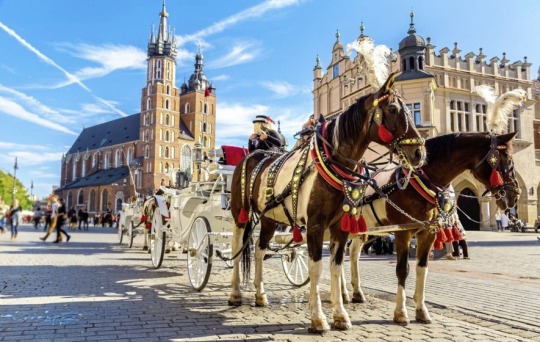
But let me guess - goblin invokes this image of rudeness and primitivity that probably comes from british understanding of poles as construction workers and such. It is curious that nuanced portrayal of poor people that is reserved for characters like Snape is not allowed to poles. They are “goblins” but Snape is a “working class hero”.
What I will describe below, is my headcanon based on what I imagine Wizarding Poland to really be like, sans goblins and other imperialist fantasies but based on my own observation of Poland as both pole and outsider (because, unfortunately, I am both).
Personality, culture
Quidditch champion image as rude and loud lads couldn’t be farther from the truth. Polish wizards, much like their friends in neighboring Czech Republic, are wise, eccentric, philosophical and brave people. They have been blessed and cursed with difficult history (Such as Partition of Poland and German and Soviet Invasion) and know very well how to operate in secrecy. In fact, they are the most secretive of all european wizards and if muggle were to accuse them of witchcraft, they would deny the fact to their last breath. In the same time, polish wizards love magic and often risk everything to pursue their next magical experiment. They are prone to be idealistic and live with their head in the clouds, sometimes literally, which can lead to both troubles and brilliant inventions.
Some believe that Nicolaus Copernicus, the genius astronomer who placed the Sun at the center of the Universe, was a polish wizard (painting by polish artist Jan Matejko):

This image of genius, sudden discoveries and epiphanies is valued in Poland to the point that students of Polish School of Magic wear stars indicating their year on their uniforms - to honor Copernicus.
However, poles aren’t Ravenclaws in disguise - they are traditional, obedient and lawful people at the core and no polish wizard, even the smallest first year, would dare to cheek their headmaster or teacher the way Harry and co. do.
Teacher - student relationship is sacred in Poland and it’s almost like your second parent - someone to be treated with utmost respect. This can lead to quite harsh hierarchies in Wizarding Poland.
Looks
Polish wizards dress modestly, colorful suits Weasley Twins style are not for them. They can sometimes even look monk-like (or medieval knight-like) in appearance. Since Poland is filled with minor aristocracy called szlachta (and I am proud to belong to it, too*) many polish wizards openly wear their coat of arms on their clothes. (*If you are wondering whether I have a coat of arms - yes, I do).
Polish School of Magic uses dark red monk-like hoods with more normal suit under as an unifroms. Since they want to be the guardians of well respected traditions, it fits them.
This doesn’t mean that poles are somber, though. They can be playful but in their distinct, “I challenge you” way. They can be competitive and fiery to the highest degree, especially when their honor or honor of their school is involved. They are indeed the most patriotic of all wizards, thinking of themselves as separated not only from muggles but from foreigners too.
Relationship with muggles
Polish wizards do not like muggles very much but unlike Britain, it rarely comes in a form of hostility but rather patronizing and light mockery. Rather than valuing pure blood,poles just think of themselves as superior to muggles in intelligence.They are especially suspicious of muggle disrespect of culture and the past which leads to wizards thinking that muggles are morally and spiritually, rather than genetically, impure. However, there was never an attempt to deny muggleborns education - in fact, they are welcomed with open arms and often even relief - “Finally, another one of us!”. This makes them a bit closer to Grindelwald’s idea of superiority than Voldemort’s one.
Music
Anyone knows Chopin, the great french-polish composer and indeed, poles adore music. To the point that Polish School of Magic considers participation in a school choir mandatory. But highest praise is reserved for those who dare and pick up an instrument (be it violin, cello, horn, piano or something else) to join the School Orchestra. If Triwizard Tournament accepted Poland, they would arrive in most curious way possible - operating the giant musical machine which would look like a church organ mixed with piano and other instruments. The headmaster would play it and the students (dressed in cloaks) would accompany him with some strange melody to make the grandest entrance ever.
Polish School of Magic
Pictured below: Frombork

Thanks to Copernicus, magical astronomy and astrology are best subjects to learn in Polish School of Magic. Unlike their colleagues in Prague who are obsessed with alchemy, potions and dark arts, poles are more interested in the spiritual so they also value divination in any forms and defense against the dark arts. Since living in a country as difficult as Poland forces you to always be on your toes, teachers consider it important to teach their students nonverbal magic as soon as possible. They also encourage wandless magic and actually had a lot of luck with it (unlike other european schools). Thanks to a certain WW2 incident, they also offer a superior course of arithmancy (If you know what I am hinting at, well done!)
Pictured: Frombork Cathedral Bell Tower

Since poles are not very practical people, they don’t teach their students about Magical Creatures at all (aside from a side course on dangerous creatures such as dragons in DADA). This just doesn’t fit their heady aesthetics. Being honest and reliable people, they also dislike transfiguration - something about turning things into animals and other things strikes them as unnecessary cruel and even devilish. Being pious at the core, poles want magic to always come from the source of respect and light. That’s why almost all students leave the school with full patronuses - most common of which is a white eagle, of course - the symbol of Poland. Poles are often so patriotic that even their best memories are linked to their national identity!
Poles are also good at charms and make superb magical duellists. In fact, not many nations can best them in this regard, if any. It is thanks to their wandless magic, wordless spells, quickness of reaction and harsh discipline (almost military-like) instilled in them in their school.
Talking about discipline... Polish School of Magic’s discipline is indeed very strict. The school grounds are usually quiet, students know best not to laugh too loud, not to pull pranks or fool around needlessly. Spontanous duels are forbidden. Teachers love their work and always keep an eye on misbehaving individuals. Lazy, incompetent or misanthopic teachers don’t exist in Polish School of Magic. Instead they can be overly strict, demanding, mocking, conservative and overly eccentric. (This one is based on real life experience, everyone.)
Below: Ksiaz castle

Teachers in Polish School of Magic lean old and getting a place there is very difficult and demands tons of connections. They also lean male but not just because of prejudice (although, unfortunately, such prejudice exists - Poland is a country of soldiers in many ways), because DADA course there is especially harsh and physically exhausting. (Some say it’s because they want to best Durmstrang and it comes with knowing your enemy).
Despite the notes of traditionalist gender roles, female teachers are usually well-respected, even more than male ones. And that’s why many female teachers are quite haughty and have queen-like demeanor.
Below: Ksiaz castle room
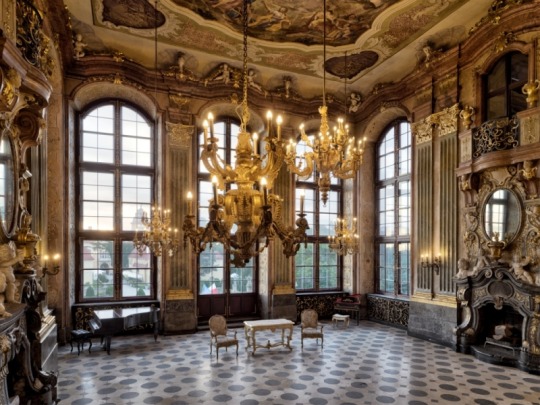
But when do poles rest from all their strict training? The answer: when holidays come. Holidays are sacred for poles and many missteps are forgiven during them, rules become slightly more relaxed.
One of the curiously LESS regulated things in Polish School of Magic is love. While british and american wizards such as Snape may get into a puritanical rage seeing two students kissing passionately, polish teachers would just smile sweetly at them and leave them alone. Girls sending boys postcards is not considered cringeworthy as it is in Hogwarts (I am looking at you, Harry) but natural and enviable. In fact, teachers encourage students to dance together and on holidays such as Christmas, they even overlook duels related to love triangles (a rare case of them approving non-DADA duels). Poles can dance well and you can often find them waltzing in the school balroom in their festive robes. They also flirt well and all this combined with the fact how good they are at duelling, makes them formidable rivals in love for students from any other school, including Beauxbatons, especially considering that Beauxbatons boys lean narcissistic rather than chivalrous.
In the end, if Poland did participate in Triwizard Tournament, I think it would charm everyone with their quick wit, intelligence, modesty, good manners and passionate spirit.
Quite far from the “Goblin” stuff, isn’t it?
Below: various beautiful views from Poland


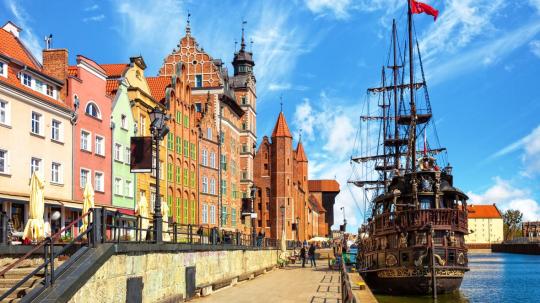

#hp#harry potter#harry potter analysis#poland#polska#aquamotto#polish school of magic#hp facts#hp lore#headcanon#headcanons#krakow#gdansk#poznan#torun#warsaw#minific#hp theory#theories#jkr criticism#europe
148 notes
·
View notes
Photo

1 день путешествия #Frombork #poland #trip (at Frombork) https://www.instagram.com/p/BxDf2zfptNv/?utm_source=ig_tumblr_share&igshid=b0er8au133oq
0 notes
Photo
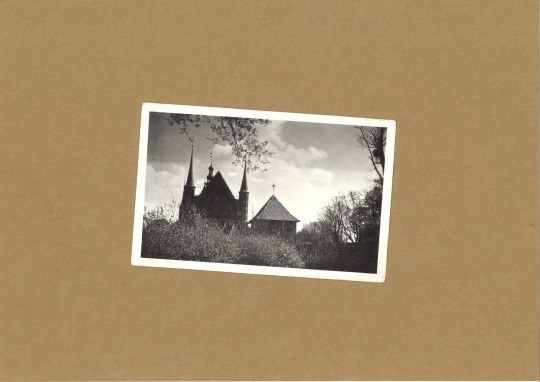

#postcard#poland#frombork#retro photography#retro#black and white#widok na wieżę Kopernika#P.T.T.K#my postcard post#2023 postcard post
1 note
·
View note
Photo

NICOLAUS COPERNICUS Nicolaus Copernicus was an astronomer and cosmologist during the Renaissance era. His name has been transliterated from the original Polish (Mikolaj Kopernik) to German (Nikolaus Kopernikus), Italian (Nicolo Copernico), and English. Copernicus is best known for his heliocentric theory, which placed the Sun at the center of the Universe with the planets and stars orbiting around it. His theory was first published in De Revolutionibus Orbium Coelestium (English: On The Revolutions Of The Celestial Spheres) and is sometimes regarded as the birth of modern astronomy.
Copernicus was born on February 19, 1473 in Torun, Royal Prussia, in the Kingdom of Poland, 171 km south of Gdansk. Some have postulated that the name “Copernicus” may have been generated from the copper mining industry in the Silesian region of modern-day Poland and Hungary, though it may have come from the dill plant (Polish: koper) which is native to the region. He spoke Latin, German, Polish, Greek and Italian, though most of his surviving works are in Latin. However, Copernicus was born in a region where German was the predominantly spoken language, and while he studied at Bologna was a member of a student organization for people whose native language was German. So while it is plausible that Copernicus's primary language was German, he probably considered himself ethnically Polish. Copernicus studied astronomy and mathematics at the University of Krakow in Poland from 1491-1492, and continued studying astronomy and physics in Bologna, Italy from 1496-1501. During this time he familiarized himself with Ptolemy's Handy Tables, which gives data necessary for calculating the positions of the Sun and the Moon in the sky at different times of the year. Using these Handy Tables and making his own observations of the movement of celestial objects, Copernicus theorized that the Earth was not at the center of the Universe, as was commonly accepted at the time. Before 1514, Copernicus wrote an outline for his book De Revolutionibus Orbium Coelestium. Surviving transcripts of this outline suggest that it had a working title of Nicolai Copernici de hypothesibus motuum coelestium a se constitutis commentariolus. In it, Copernicus seems to come to several conclusions: all celestial objects do not orbit around a single point in the sky; the gravitational center of the Earth is the gravitational center of the Moon's orbit; the Sun is the center of the Universe, not the Earth; the distance from the Earth to the Sun is much smaller than the distance from the Earth to the stars; the stars have fixed positions in the sky; and the Earth revolves around the Sun. Although this outline was not meant for publication, some copies made it into the hands of Copernicus' colleagues. It is often said that Copernicus' theory was regarded as blasphemy by the church; however, Pope Clement VII actually took interest in heliocentrism. Around 200 BCE, Aristarchus of Samos developed a theory which placed the Sun at the center of the Universe with the Earth orbiting around it. In Aristarchus' time, only Seleucus of Seleucia supported heliocentrism a century later. Aristarchus' theory died with him in 230 BCE. Thus, while Copernicus was not the first to develop the theory that the Earth revolves around the Sun, he successfully revived it. Many of Aristarchus' calculations, while correct, were unprovable at the time because of limited resources and technology. However, Copernicus was able to use the technology of his time to prove Aristarchus' theory. Only mild controversy sprouted within the church as a result of the publication of Copernicus' theory as scientific fact. The censor of the Catholic Church in the 1500s, Bartolomeo Spina, and his successor, Giovanni Maria Tolosani, both publicly condemned Copernicus' theory. However, the Catholic church did not take official action against heliocentrism until some sixty years later. Reasons for this have been hotly debated, and one of the conclusions often come to is that Galileo Galilei, himself a Catholic, was able to verify Copernicus' observations using the telescope. Copernicus died in Frombork, Poland on May 24, 1543. Legend has it that the final printed version of his book, De Revolutionibus Orbium Coelestium, was placed in his hands moments before he died. Copernicus had supposedly fallen into a coma induced by a stroke, and came out of the coma the very day of his death. He was reported to have been buried in Frombork Cathedral, but archaeological searches for Copernicus's remains in 1802, 1909, 1939 and 2004 yielded no results. In August 2004, an archaeological team from Pultusk, Poland located what they believe to be Copernicus's remains beneath the floor of the cathedral. The discovery was announced in 2008, after a broken nose and scarred eyebrow on the skeleton was matched to a self-portrait, and DNA found in the grave matched DNA found on an original manuscript known to have been extensively handled by Copernicus. In May 2010, Copernicus was given a proper burial at St James' Cathedral Basilica in Olsztyn, Poland where he remains today. -R. Atkinson Image: Portrait of Copernicus, c. 1580 (Source: Torun Old Town City Hall/https://www.smithsonianmag.com/science-nature/the-body-of-copernicus-is-identified-2620755/). A computerized image of Copernicus generated from his remains can be seen here: http://usatoday30.usatoday.com/tech/science/discoveries/2005-11-03-copernicus-grave_x.htm. Sources: http://plato.stanford.edu/entries/copernicus/ http://scienceworld.wolfram.com/biography/Copernicus.html http://www.geo.utexas.edu/courses/302d/Fall_2011/Full%20text%20-%20Nicholas%20Copernicus,%20_De%20Revolutionibus%20(On%20the%20Revolutions),_%201.pdf
#Copernicus#physics#orbit#De Revolutionibus Orbium Coelestium#Science#history#the universe#the real universe#isuniverse
34 notes
·
View notes